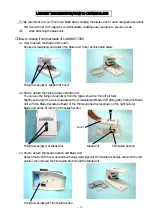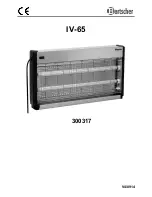
23
Baker Instrument Company
The Measure of Quality
10.
Install all boards back into the card cage and secure with the original hardware.
NOTE: These assemblies contain C-MOS logic which are ES D sensitive. Removal of
these boards are recommended to be performed at a grounded station by personnel
wearing a grounded wrist strip. Failure to do this may result in integrated circuit damage.
ECO R
ECORD
Engineering changes have taken place since the manufacturer of D12000 S/D 001.
D12000 series after serial number 210 should have these changes installed at the factory.
These changes are designed to add more capability and improve the tester’s performance.
Also they will increase the tester’s reliability by protecting components and circuits
which have shown over the years to be vulnerable to failure in certain testing
applications. The following is a list of these changes we recommend to be checked for
installed during servicing.
1.
A cooling fan for the CRT circuits was added to eliminate scrolling of the CRT
display when internal temperatures reach above 105 degrees.
2.
Power board components R3 and C1 were changed to increase reliability of Q1 on the
Power board.
3.
Discharge board changes include changes in the value of resistor R5 to provide for a
greater incoming signal to the I/O board. This allows for a better capability to shape
the surge signal so that the displayed surge signal on the CRT display more closely
resembles what is shown at the test leads on an oscilloscope.
4.
Other changes to this assembly isolation of the surge readout cable from Discharge
board ground and ground routing changes. This will improve the noise resolution
seen of the first displayed positive peak when surge testing at higher voltages.
5.
Changes in the values of Stack board components R1 and R34 were performed to add
greater reliability in SCR’s Q1-Q5.
6.
Changes in the revision of the Zero Start Interlock board form a common neutral
design to a common ground design. This revision change allows for the elimination
of false hipot trips and adds the capability to disable the Zero Start Interlock when
testing armatures when a footswitch is used.
7.
The addition of relays K1 and K2 and associated wiring harness changes were added
to eliminate the condition where the displayed surge voltage on the CRT would drop
approximately 10% when the PTT button was released.


































